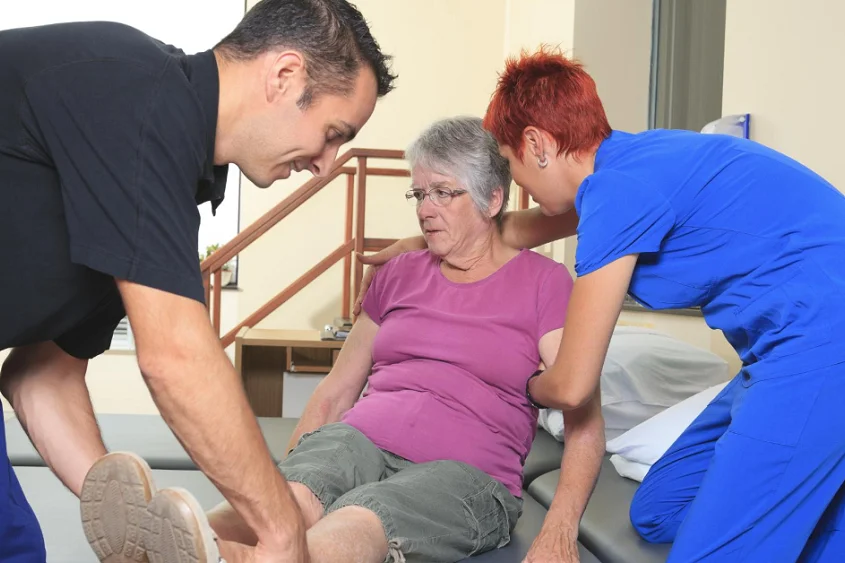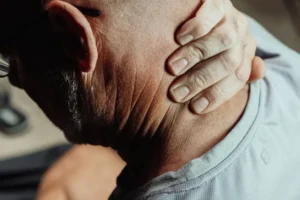Physical Therapy in Neurological Rehabilitation: Stroke, Traumatic Brain Injury, and Spinal Cord Injury
- Updated on: May 11, 2024
- 4 min Read
- Published on May 11, 2024

The consequences of neurological illnesses and injuries, such as those to the brain and spinal cord, on a person’s quality of life may be catastrophic. Physical therapy helps patients recovering from these conditions a great deal. The goal of physical therapy is to improve the patient’s mobility, function, and quality of life via the use of tailored treatment programs. In this article, we’ll examine the advantages and the most essential techniques employed in Physical therapy credentialing services involvement in the rehabilitation of neurological ailments such as stroke, traumatic brain injury, and spinal cord dysfunction.
Stroke often causes motor impairments, balance deficits, and functional limitations, making rehabilitation essential. Regaining mobility, strength, balance, coordination, and learning how to execute everyday chores may be highly beneficial for stroke patients who undergo physical therapy. Depending on the patient’s condition, the therapist may suggest gait training, balancing exercises, or functional exercises. Paralysis, chronic discomfort, and impaired sensation are only some of the symptoms that may be helped by physical therapy for stroke patients.
Mild, moderate, and severe physical and cognitive dysfunction manifestations have been linked to traumatic brain injuries. Physical therapists play a crucial role in the multidisciplinary team that addresses the physical issues that arise after a traumatic brain injury. Balance, coordination, and gait development are just a few of the motor skills they work on using a variety of therapeutic approaches. Therapeutic exercises, functional activities, and specialized equipment help people with mobility issues, those recovering from injuries, and those reintegrating into society regain independence and mobility.
Spinal cord injuries often result in the loss of motor and sensory function below the area of damage, making rehabilitation of this disease crucial. Regaining lost mobility and improving overall health are physical therapy’s top priorities. Therapists use various strategies to enhance their patients’ musculature, stamina, and mobility, including strength training, gait training, and range of motion exercises. Orthoses, assistive technologies, and functional electrical stimulation may benefit people with mobility and independence issues.
Neuroplasticity, the brain’s innate capacity to reorganize and form new connections, is crucial in the treatment of neurological disorders. This idea is put to use in physical therapy to aid in the recovery of lost mobility and function. Therapists use techniques including task repetition, task specific training, and functional exercises to promote the development of new neural connections in the brain. This method improves motor skills, facilitates the acquisition of new ones, and enhances overall functional capacity.
Physical therapists that specialize in neurological rehabilitation focus on the individual’s needs and goals for recovery. Each patient is administered A battery of tests to assess their motor abilities, balance, mobility, and functional constraints. The outcomes of these assessments will inform the development of a personalized treatment plan that may include therapeutic exercises, manual therapy methods, modalities (such as heat or electrical stimulation), and adapted equipment. Regular assessments ensure progress and that the therapy is tailored to the individual’s needs.
Rehabilitating stroke patients often makes use of constraint-induced movement therapy (CIMT). The healthy limb’s usage is limited while the injured one is actively encouraged. The goal of this method is to stimulate the brain into rewiring the afflicted limb, hence enhancing motor function. CIMT has shown encouraging efficacy in enhancing upper-extremity function and general functional outcomes for stroke patients.
The goal of neurodevelopmental therapy (NDT), commonly known as the Bobath method, is to help people with neurological problems improve their movement and postural control. Therapists trained in NDT observe the client in motion and then use manual methods to help the client move more effectively and with more ease. The purpose is to encourage healthy motion, boost coordination, and increase performance. Stroke and cerebral palsy patients can benefit from NDT throughout their recovery.
Innovations in technology, such as virtual reality (VR) and robots, have provided new resources for neurorehabilitation. Therapeutic exercises and simulations may be more easily incorporated into a patient’s daily routine with the use of virtual reality-based therapies. Balance, motor control, and functional results for people with stroke and traumatic brain injury have all improved with this method. Exoskeletons and robotic arms are only two examples of robotic technologies that may help patients regain motor function and independence by assisting them in completing repeated and regulated motions.
Exercises and other activities are performed in a pool or other body of water as part of aqua therapy. When doing strength training movements, the buoyancy of water serves to cushion the stress on the joints while also providing resistance. Individuals with neurological problems might benefit greatly from aquatic treatment because it promotes better mobility, enhanced balance, and decreased muscular stiffness. Water’s calming effects and ability to promote health are two further ways in which it aids the recovery process.
When applied to muscles or neural pathways, electrical currents may be used for functional electrical stimulation (FES). muscular strength, muscular spasms, and functional mobility may all be helped by this method. Individuals with spinal cord injuries may benefit from FES because it can stimulate paralyzed muscles, making it easier for them to walk and grab objects. Motor control and functional results in stroke therapy have also been demonstrated to improve with its use.
Balance training: People with neurological problems often have difficulties maintaining their balance, which may have a major influence on their ability to move about their environment. In order to increase postural stability and lessen the likelihood of falls, physical therapists use a number of balance training approaches, such as weight shifting exercises, dynamic balance activities, and proprioceptive training. When it comes to helping stroke survivors regain their independence in everyday life, nothing is more important than balance training.
When it comes to helping people with neurological problems return to their communities, physical therapists play a key role. Patients are assisted in developing coping mechanisms and are given instruction in how to use them in everyday life. Some examples of such “functional tasks” are stair climbing, automobile entry and exit, and public transit practice. Physical therapists facilitate autonomy and social integration by addressing unique difficulties each patient faces.
In conclusion, individuals recovering from neurological illnesses including stroke, TBI, and SCI greatly benefit from physical therapy. Physical therapists enhance their patients’ freedom and quality of life by restoring their mobility, balance, and function. Through targeted therapeutic interventions with an emphasis on neuroplasticity and motor relearning, physical therapists help patients restore physical function, reach their full potential, and adapt to their new environment.












